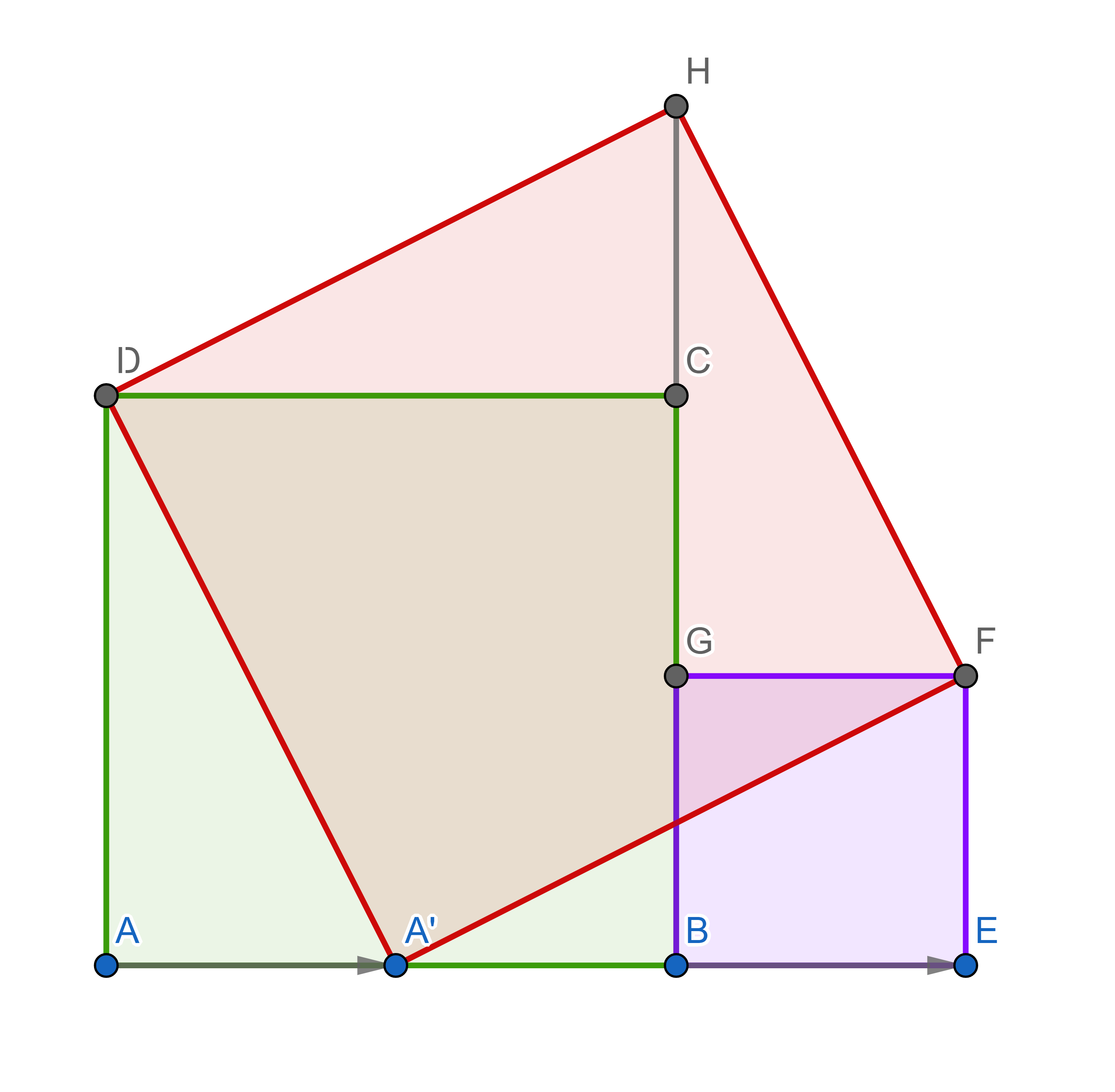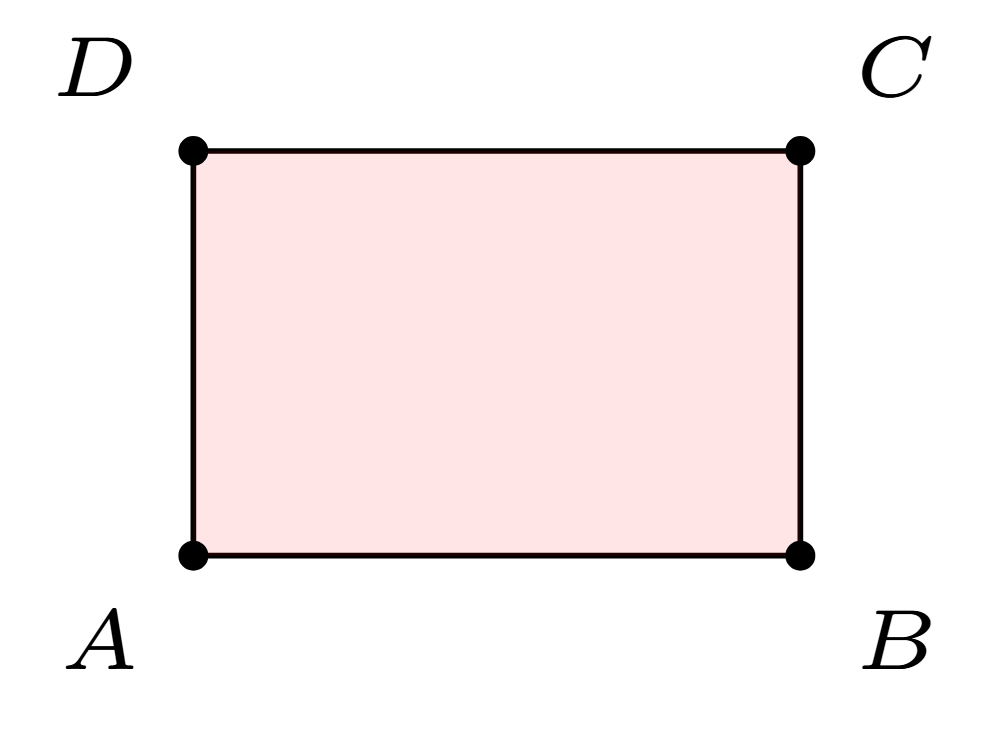Problems
Most magic tricks rely on some kind of sleight of hand. However, some tricks are powered by maths!
A fruitful way of analyzing card shuffles is by using the idea of “permutations". Permutations are important objects that occur in various parts of maths. Many interesting patterns emerge, and we will only touch the tip of the iceberg today.
Suppose you have a set of ordered objects. A permutation of this set is a reordering of the objects. For example, a permutation of a deck of cards ordered from top to bottom is simply a shuffle of the cards. Note that in general, a permutation can be defined as a relabelling of objects, so an order is not necessary.
Let’s discuss two ways of writing permutations.
The first way is two-line notation. Say you have the cards from top to bottom Ace, two, three. Say Ace is 1. Suppose that after a shuffle \(p\), we have from top to bottom two, three, Ace. The two-line notation keeps the original positions on the first line and the new positions in the second line.
\[p = \left( \begin{array}{ccc} 1 & 2 & 3 \\ 3 & 1 & 2 \\ \end{array} \right).\]
A second way of writing permutations is function notation. In the same situation, we could write \(p(1)=3\), \(p(2)=1\) and \(p(3)=2\).
As a first indication of why permutations give a useful perspective, we note that permutations can be done after another and the result is still a permutation. Let \(q\) be the permutation on the same three cards given by \(q(1)=2\), \(q(2)=3\) and \(q(3)=1\). Consider \(qp\) which is performing \(p\) first and then \(q\). To find out what the effect of this composite permutation is on \(1\), we can visualize it as follows: \[1\mapsto3=p(1)\mapsto q(p(1))=q(3)=1.\]
This shows that the function notation plays very nicely with composing permutations. By the way, if we work out the entire \(qp\) in this fashion, we find that \[qp = \left( \begin{array}{ccc} 1 & 2 & 3 \\ 1 & 2 & 3 \\ \end{array} \right).\]
In other words, \(q\) has “negated" the effect of \(p\)!
We often think of symmetry as a property of shapes. Another way of thinking about it is as something you do to an object which keeps the object looking the same. The example you’ve likely met is reflection. The other one that we’ll consider today is rotation. An important feature is that we consider ‘doing nothing’ as a symmetry - we call this the identity.
Today we will focus on applications of the Pythagorean theorem in geometry and number theory. This famous and ancient theorem states that in a right-angled triangle, the area of a square on a hypothenuse (the longest side) is the sum of the areas of the squares on the other two sides. \[a^2 + b^2 = c^2\]
There are over a 100 proofs of Pythagorean theorem, a quite simple one is visible below:

Four right triangles in this picture are identical (congruent): \(\triangle A A' D, \triangle EFA', \triangle GFH\) and \(\triangle CHD\). By moving the triangles around you can see that the large red square has the same area as the sum of areas of the other two squares (violet and green).
Today’s session is not only about geometry, we will also learn something about the equation \(a^2 + b^2 = c^2\), where all the numbers \(a,b,c\) are integers.
Today we will discover some ideas related to non-isosceles triangles. This restriction comes from the fact that in isosceles triangles, a median and a height coincide.
Today we will be finding the areas of some geometric figures. Here is a brief reminder of how to calculate the area of common shapes.
In the picture below, the area of the rectangle is \(|AB|\times |AD|\).

The area of a triangle is given by \(\frac{1}{2}bh\), where \(b\) is the length of a chosen base and \(h\) is the height. In this case, the segment \(AB\) is the base and \(CD\) is the altitude corresponding to the base \(AB\).

The area of a circle with radius \(r\) is \(\pi r^2\). The number \(\pi\) is approximately 3.14159 to five decimal points.

Today we explore inequalities related to mean values of a set of
positive real numbers. Let \(\{a_1,a_2,...,a_n\}\) be a set of \(n\) positive real numbers. Define:
Quadratic mean (QM) as \[\sqrt{\frac{a_1^2 + a_2^2 +
...a_n^2}{n}}\] Arithmetic mean (AM) as \[\frac{a_1 + a_2 + ...+a_n}{n}\]
Geometric mean (GM) as \[\sqrt[n]{a_1a_2...a_n}\] Harmonic
mean (HM) as \[\frac{n}{\frac{1}{a_1} + \frac{1}{a_2} + ...
\frac{1}{a_n}}.\] Then the following inequality holds: \[\sqrt{\frac{a_1^2 + a_2^2 + ...a_n^2}{n}} \geq
\frac{a_1 + a_2 + ...+a_n}{n} \geq \sqrt[n]{a_1a_2...a_n} \geq
\frac{n}{\frac{1}{a_1} + \frac{1}{a_2} + ... \frac{1}{a_n}}.\] We
will prove \(QM\geq AM\) and infer the
\(GM \geq HM\) part from \(AM \geq GM\) in the examples. However, the
\(AM\geq GM\) part itself is more
technical. The Mean Inequality is a well known theorem and you can use
it in solutions today and refer to it on olympiads.
Today we will solve some problems using algebraic tricks, mostly
related to turning a sum into a product or using an identity involving
squares.
The ones particularly useful are: \((a+b)^2 =
a^2 +b^2 +2ab\), \((a-b)^2 = a^2 +b^2
-2ab\) and \((a-b) \times (a+b) = a^2
-b^2\). While we are at squares, it is also worth noting that any
square of a real number is never a negative number.
The evil warlock found a mathematics exercise book and replaced all the decimal numbers with the letters of the alphabet. The elves in his kingdom only know that different letters correspond to different digits \(\{0,1,2,3,4,5,6,7,8,9\}\) and the same letters correspond to the same digits. Help the elves to restore the exercise book to study.
Suppose you want to compute the sum \(1+2+\dots+n\) up to some positive integer \(n\). Then you discover a curious pattern:
| \(n\) | 1 | 2 | 3 | 4 | 5 | 6 | 7 | 8 |
|---|---|---|---|---|---|---|---|---|
| \(1+2+\dots+n\) | 1 | 3 | 6 | 10 | 15 | 21 | 28 | 36 |
| \(\frac{n(n+1)}{2}\) | 1 | 3 | 6 | 10 | 15 | 21 | 28 | 36 |
We may guess at this point \(1+2+\dots+n = \frac{n(n+1)}{2}\). How can we prove it? One way is to attack the problem step by step.
When \(n=1\), the sum is just \(1\) and \(\frac{1\times(1+1)}{2}=1\). So far so good.
When \(n=2\), the sum is \(1+2 = 3\) and \(\frac{2\times(2+1)}{2}=3\). We can also see this in another way. As we already noted, \(1 = \frac{1\times(1+1)}{2}\). This means \[1+2 = \frac{1\times (1+1)}{2} + 2 = \frac{1\times2+2\times2}{2} = \frac{(1+2)\times 2}{2} = \frac{2\times(2+1)}{2}.\]
When \(n=3\), we have already proved that \(1 + 2 = \frac{2\times(2+1)}{2}\), so \[1+2+3 = \frac{2\times (2+1)}{2} + 3 = \frac{2\times3+2\times3}{2} = \frac{(2+2)\times 3}{2} = \frac{3\times(3+1)}{2}.\]
When \(n=4\), we have already proved that \(1 + 2 + 3 = \frac{3\times(3+1)}{2}\), so \[1+2+3+4 = \frac{3\times (3+1)}{2} + 4 = \frac{3\times4+2\times4}{2} = \frac{(3+2)\times 4}{2} = \frac{4\times(4+1)}{2}.\]
When \(n=5\), we have already proved that \(1 + 2 + 3 + 4 = \frac{4\times(4+1)}{2}\), so ...
It starts getting a bit boring, but hopefully you get the point. Important takeaways from the example above:
The truth of the next case depends ONLY on the previous case.
We know what we need to prove IS true for the first case, that is \(n=1\).
By repeating the same procedure starting from \(n=1\), we can eventually reach any given positive integer.
Thus, the formula is true for all positive integers (also known as natural numbers).
A diagram summarizing the idea: \[\text{true for } n=1 \implies \text{true for } n=2 \implies \text{true for } n=3 \implies \text{true for } n=4 \implies \dots\]
This is the mechanism behind induction. Formally, we can state the principle of mathematical induction as follows. Suppose we have a series of statements numbered by the positive integers: 1st statement, 2nd statement, 3rd statement and so on. Suppose that
the 1st statement is true (the base case is true);
whenever the \(n\)th statement is true, the \((n+1)\)th statement is also true (the induction step is valid assuming the induction hypothesis).
Then the statement is true for all positive integers (natural numbers). Let us revisit the example and prove it formally now using the principle of mathematical induction.
Diophantine equations are those where we’re only interested in finding the integer (whole number) solutions. Some of these equations are quite simple, while others look simple but are actually very difficult. The most famous one is Fermat’s Last Theorem, which says that when \(n>2\), there are no solutions to \[x^n+y^n=z^n.\] Pierre de Fermat claimed that he proved this in 1637, scribbling it in the margin of a book, but said “I have discovered a truly marvelous proof of this, which this margin is too narrow to contain." It was only proved by Andrew Wiles in 1995. Today’s problems won’t take 358 years to solve.